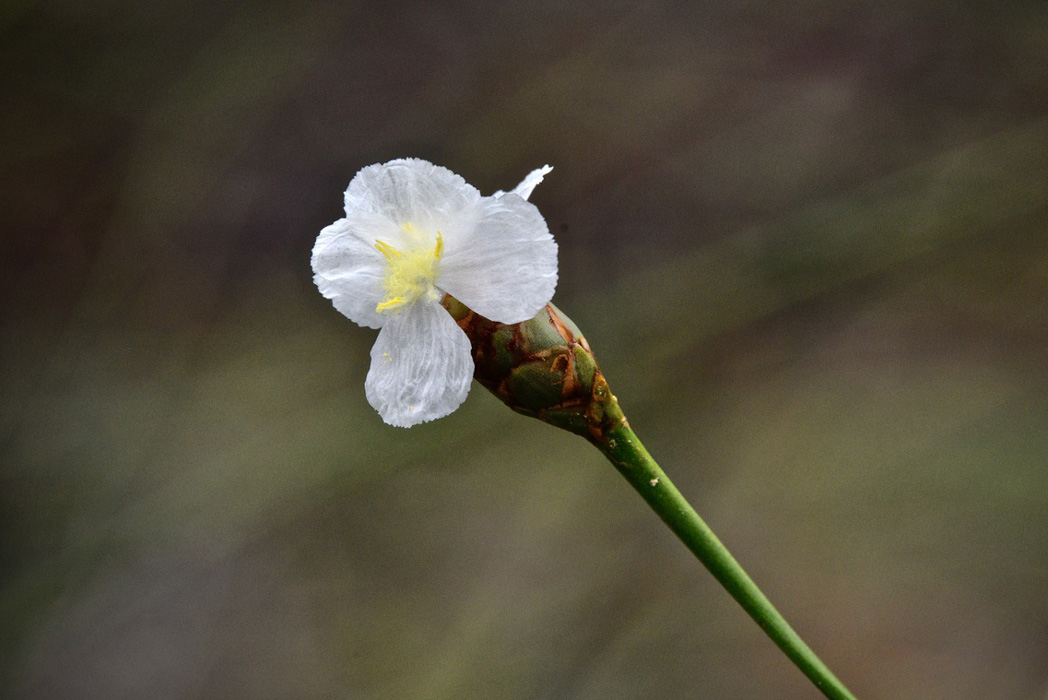Carolina yellow-eyed grass
Pictured above: Carolina yellow-eyed grass (Xyris caroliniana) blooming at Savage/Christmas Creek Preserve in Orange County. Photo by Steve Van Meter. Click on terms for botanical definitions. View post as a PDF
Carolina yellow-eyed grass is a perennial wildflower found in pine flatwoods, sandhills, wet prairies, coastal dune swales and bog edges throughout Florida. It blooms late spring through fall and is primarily pollinated by wind and bees, but other insects are known to visit the flowers. Its flowers are relatively small yet conspicuous, and look like pale little butterflies dotting the landscape.
Carolina yellow-eyed grass’ flowers are composed of three white obovate petals. Each flower produces three fertile stamens with yellow anthers and three sterile stamens (staminodes) that are whitish-yellow and bearded. Its three lateral sepals are linear and reddish-brown; two are keeled. Flowers are born in cone-like heads atop a smooth, twisted scape and may be solitary or in small clumps. Its scape is leafless but sheathed. Sheaths are shorter than leaves, twisted or flexuous, and may be ridged. Leaves are long (up to 2’), linear and twisted with an acute apex. They emerge from a brown, bulbous base. Leaf margins may be entire or slightly tuberculate. Seeds are born in capsules.
Of the 24 Xyris species native to Florida, Xyris caroliniana is the most unique. Its flowers tend to open in the afternoon, while other species open in the morning. And it is the only one with consistently white flowers. All other species bear yellow flowers, although X. platylepis may occasionally produce white flowers. (X. caroliniana occasionally may also produce yellow flowers, more so in northern Florida.)
The genus name Xyris is Latin for “wild iris” and is derived from the Greek xyron, meaning “razor.” It alludes to the two-edged razor-like leaves and iris-like appearance of plants in this genus.
Native Americans used an infusion of Carolina yellow-eyed grass roots to treat diarrhea.
Family: Xyridaceae (Yellow-eyed grass family)
Native range: Nearly throughout
To see where natural populations of Carolina yellow-eyed grass have been vouchered, visit florida.plantatlas.usf.edu.
Hardiness: Zones 8–11
Lifespan: Perennial
Soil: Moist to wet sandy, loamy or clay soils
Exposure: Full sun to partial shade
Growth habit: 2+’ tall
Propagation: Seed
Garden tips: Carolina yellow-eyed grass works well in landscapes where soils are consistently moist. It gives vertical interest to wetland and pond edges.
Nurseries that specialize in native plants occasionally offer Xyris species for sale, which may include X. caroliniana. Visit PlantRealFlorida.org to find a native nursery near you.

